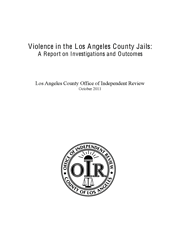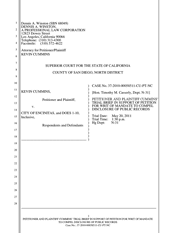California public records
A guide to your rights as a citizen
Decoding public pension systems
There are more than 130 public employee retirement systems in the state, and each has to complete annual reports of contributions, investments, assets and liabilities.
There has been much public debate about the high pensions received by some top government officials. Here is a summary of what information is publicly available.
What funds do cities and public agencies use to provide retirement benefits for their employees? How do they work?
There are more than 130 public employee retirement systems in California. The largest and most prominent is CalPERS, which has about 1.6 million members. Other major funds include the University of California Retirement System and the State Teachers’ Retirement System, known as CalSTRS. Many large cities and counties have their own retirement systems, including Los Angeles County, San Francisco County and the cities of Los Angeles, Oakland and San Diego.
Cities and public agencies contribute a portion of staff salaries to the fund each year. Employees must contribute as well, although in some cases the employer pays the required amount on the employees’ behalf. The administrators of the fund then invest the money.
Employees receive an annual pension from that fund once they retire. Their exact pension is determined by a benefit formula set by the agency. Most formulas multiply a percentage of the employee’s highest annual salary by the number of years they worked for that agency.
The agency also determines the age at which employees are eligible to retire. In most cases, public safety workers such as police and firefighters can retire at 50, and other employees can retire at 55 or 60.
Where can I find more information about public pension systems?
Pension plans publish a Comprehensive Annual Financial Report and an actuarial valuation report each year. These reports are crucial to understanding how the pensions are funded. Laura Quinby, a researcher at the Center for Retirement Research at Boston College, said there are three sections within these reports that are especially important:
- The Schedule of Funding Progress provides information on the plan’s assets, liabilities and funded ratios.
- The Schedule of Contributions provides information on the Annual Required Contribution for the city or agency.
- The Plan Provision provides information on the normal retirement age, benefit formula and member contributions.
“It’s important to put pension figures in context,” Quinby said. “Taxpayers should consider pension costs relative to overall budgets.”
How can I tell how much my city is paying in pension costs?
Request this type of information directly from your city, not from the fund. Each city should have its own actuarial reports completed each year, along with their annual financial reviews. These reports are public record and should be available upon request.
There are several important figures to look for in these reports. One is the Employer Contribution Rate for each category of employee. This figure indicates the percentage of staff salary that a city or agency pays into the pension fund. Residents should also check if their cities offer a 401(a) plan or a 457 plan to employees. These supplemental plans can increase the agencies’ annual expenditures on retirement benefits.
Who keeps track of whether pensions are underfunded? Are those reports available to the public?
State law requires each pension fund to conduct an independent audit each year. Those auditors evaluate the assets of the fund and its future liabilities. Their reports are then forwarded to the state controller’s office. This process can be extremely time-consuming because of the size of the funds and the scope of their investments, Fong said.
“It’s fairly common for actuarial reports to be put out after a year’s lag,” Quinby said. “They’re starting to get better about it, but late reporting is definitely an issue.”
Spokesman Garin Casaleggio said the controller’s office compiles reports as they receive them from the various retirement systems. At this point, the most recent records available from the controller’s office are from the 2006–2007 fiscal year, but Casaleggio said he expects later reports to be available in the coming months.
What is a pension spike?
Pension spiking is an informal phrase to describe methods of boosting pensions beyond what actuaries would project. Marcia Fritz, a pension expert based in Sacramento, described it as a process of “cherry-picking” extra credits to boost compensation in the final years of employment. Because pension formulas typically use a worker’s highest annual salary to compute annual benefits, these changes can significantly increase the ultimate payouts.
CalPERS spokesman Ed Fong said that administrators rely on their internal guidelines in reviewing what compensation is eligible for pensions. He noted that CalPERS does not count overtime or vacation payouts in pension calculations.
Do funds monitor pension spiking? Is there any way to spot it through public records?
Fritz said it’s hard to catch pension spiking because it requires very specific records on individual employees. She said one thing to watch out for is a police or fire chief who retires shortly after receiving the position, or a city employee who holds multiple titles in the final years of employment.
Quinby also said that it’s very difficult — if not impossible — for a citizen to spot a pension spike on their own.
“There’s really no way to do that, or to predict it in any way,” she said. She added that the best thing for residents to do is to ask whether their local plan has any anti-spiking provisions in place.
Some funds have recently established rules intended to prevent “gaming the system,” she said.
Share your documents
If you have a public record you would like to share with The Times, attach it to an email to documents@latimes.com or mail it to 202 W. 1st St. Los Angeles, CA 90012, attention City Desk.
Reader-reported documents
About documents.latimes.com
The Times has published thousands of pages of public documents, ranging from Ruben Salazar’s killing to the Bell scandal. Track the Times’ latest at documents.latimes.com.


